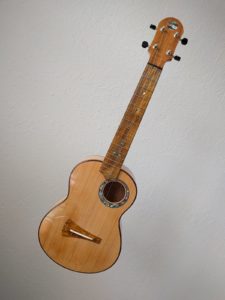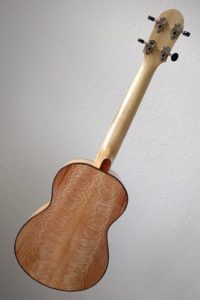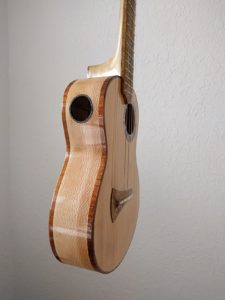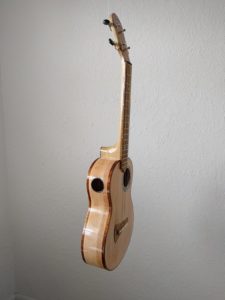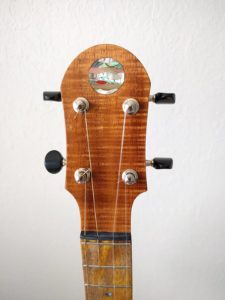The Kasha bracing style is a large departure from the standard more symmetric bracing. It is designed to maximize the vibrating area of the top, and treats the base side differently from the treble side, hence the off-center sound hole. Because of the base/treble asymmetry this will always be a low-G instrument. I have been getting great results with a more symmetric bracing, but from my early days Kasha yielded excellent results. Whether it is the Port Orford Cedar top (great stiffness to weight ratio), the Kasha bracing, the side sound port, or indeed all of the above, this instrument has great volume, great sustain, very clear note separation, and a certain bell like tone (a ‘clean’ sound is another way of putting it) that is hard to describe. A great instrument for the finger-picker.
Note: since the Kasha bracing style is fundamentally asymmetric, with the base side treated differently from the treble side, this is a low-G instrument. It should not be strung in a high-G style.
Top – Port Orford cedar cut originally from some downed beach logs
Back & sides – local Pennsylvania sycamore, with side sound port
fingerboard & bridge – Florida black olive from a fellow woodworker who got it from his neighbor’s tree
binding & headplate – koa
purfling – black-white-black
rosette – pink abalone
saddle – bone
gloss finish
